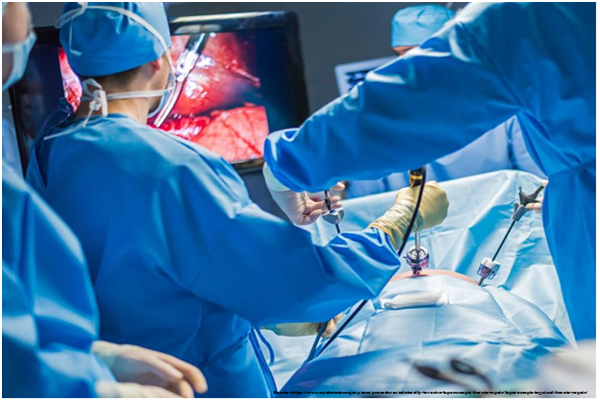Abdominal wall reconstruction (AWR) is a complicated surgery that helps repair reoccurring hernias, ventral hernias, large hernias, and parastomal hernias. It is also used to repair surgical trauma and rebuild the broken abdominal wall.
For abdominal wall reconstruction, consulting a well-qualified and seasoned AWR surgeon is a wise and essential decision. Dr. Harsh Sheth has performed many abdominal wall reconstruction surgeries for the past 10+years of his medical experience. Moreover, he is a proficient laparoscopic and bariatric surgeon in Mumbai skilled in GI and associated surgeries.
First, let’s know,
What are the functions of abdominal muscles?
The primary function of the abdominal wall is to protect and support the internal organs. The core is the front and outer portion of the abdomen. It is made up of muscles and tendons that overlap.
The core supports the body, allowing it to execute various functions such as side-to-side movement, leaning backward, and moving around the body’s axis. The core also aids breathing by acting as an auxiliary to the respiratory muscles.
Who is eligible for abdominal wall reconstruction (AWR) surgery?
An abdominal wall reconstruction is a good option for patients who have:
- Multiple abdominal wall defects
- Large hernia deformities
- Prior failed hernia repair surgery
When is the AWR surgery recommended?
Experts recommend abdominal wall reconstruction in case of:
- Patients complain of stomach pain, back pain, trouble moving down the axis of the body, and even imbalance while their abdominal muscles are injured, weak, or impaired.
- Tears or weaknesses cause a hernia in the layers of bone, fat, and muscles that make up the abdominal wall. It may happen at the site of prior surgical incisions or in patients with poor musculature or genetic defects.
How is abdominal wall reconstruction (AWR) surgery performed?
- Repairing the hernia and the abdominal core involves removing a portion of the abdominal wall muscles and replacing and realigning the abdominal muscles.
- A mesh is often inserted to strengthen the hernia repair and avoid recurrences.
- The critical goal of reconstruction is to restore the abdomen’s shape, functionality, and strength.
- The AWR surgeryaims to keep the intestines from protruding into the gap or tear in the musculature, which is achieved in all hernia surgeries. The treatment used varies from one patient to another.
Post-operative care and recovery time for AWR surgery
- Depending on the type of AWR surgery performed, the recovery period and post-operative treatment needed can differ.
- Since the surgery is an in-patient process, admission and hospitalization are required.
- Depending on the type of surgery, the patient can be hospitalized for 2 to 5 days. Patients having laparoscopic surgery require a shorter stay.
- By the end of five weeks, the patient should return to their regular schedule.
- For at least six weeks, the patient should avoid exercising.
- Patients should stop lifting heavy weights (more than 5 kg) and wear an abdominal belt for around six months.
- Before continuing any activity, the patient should seek advice from their surgeons.
What are the side effects of AWR surgery?
Any surgery has complications, and AWR surgeries are no different. A few complications associated with abdominal wall reconstruction are:
- Bleeding
- Deep venous thrombosis
- Swelling
- Bruising
- Itching
- Poor healing of the wound
- Infection
It is best to make an appointment with an AWR surgeon and discuss potential complications before consenting to surgery.

